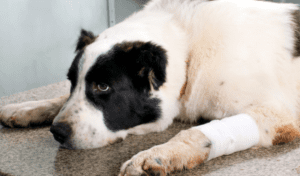When operating a pet shelter, it's crucial to be aware of contagious illnesses in pet shelters that can affect the animals in your care. Understanding the modes of transmission, symptoms, necessary actions, and proper disinfection methods can help you...
When operating a pet shelter, itís crucial to be aware of contagious illnesses in pet shelters that can affect the animals in your care. Understanding the modes of transmission, symptoms, necessary actions, and proper disinfection methods can help you prevent the spread of these diseases.†
In this blog, we will explore three common contagious illnesses in pet shelters Ė panleukopenia, calicivirus, and distemper Ė and provide insights on how to avoid them.
Panleukopenia: One of the Common Illnesses in Pet Shelters

Panleukopenia is transmitted through the fecal-oral route and fomites, which are inanimate objects capable of carrying the virus. Kittens may exhibit vomiting, diarrhea, and loss of appetite. Newly vaccinated or adult cats with uncertain vaccine histories may experience vomiting. Immediately administer a parvo SNAP test for diagnosis. If the test is positive, consider yourself contaminated.
Minimize contact with objects and relocate the infected cat to a sink for handwashing. Disinfect the sink, clothes, and shoes using effective disinfectants like bleach, Trifectant, Rescue (Accel), pool shock, or Wysiwash. Notify individuals about the catís previous location. Isolate the cat and thoroughly disinfect the respective area.
Effective disinfectants include bleach, Trifectant, Rescue (Accel), pool shock, and Wysiwash.
Careful on Calicivirus

Calicivirus manifests through oral ulcers, sneezing, and nasal discharge. Limping without trauma can also be a symptom. There is no in-house test available for calicivirus. Treat oral ulcers as calici and assume contamination. Minimize contact with objects and proceed to a sink for handwashing.†
Use a disinfectant like Trifectant to sanitize the sink, clothes, and shoes. Notify individuals about the catís previous location. Isolate the cat and disinfect the respective area. Effective disinfectants for calicivirus include bleach, Trifectant, Rescue (Accel), and Wysiwash.
Distemper is one of the bad illnesses in Pet Shelters

Distemper can present with symptoms such as green/yellow nasal discharge, crust around the eyes, pneumonia, twitching, seizures, fever, and dandruff. It can affect multiple body systems.
Promptly isolate the affected dog from other dogs. Take necessary precautions, such as wearing gowns, gloves, and shoe covers if required. Move the dog to a separate isolation area from dogs without distemper. Ideally, consider placing distemper or distemper-suspected dogs in foster homes. Effective disinfectants for distemper include bleach, Trifectant, Rescue (Accel), and Wysiwash.
Conclusion
Preventing the transmission of contagious illnesses in pet shelters is essential for the well-being of the animals in your care. By understanding the modes of transmission, recognizing symptoms, taking appropriate actions, and implementing proper disinfection protocols, you can minimize the risk of outbreaks. Ensure the health and safety of the animals by following these guidelines and providing a clean and secure environment within your pet shelter.
†
Ensure Your Petís Well-being Ė Explore the Doobert Store for Essential Health Supplies Today!
At the Doobert Store, we understand the importance of providing your pets with the best care possible. Thatís why we offer a wide range of pet health necessities to meet all their needs.
The post Contagious Illnesses in Pet Shelters And How To Avoid Them appeared first on Doobert LIVE.














